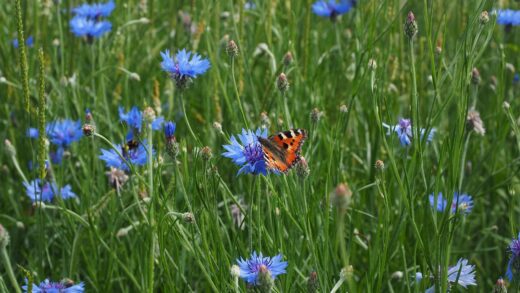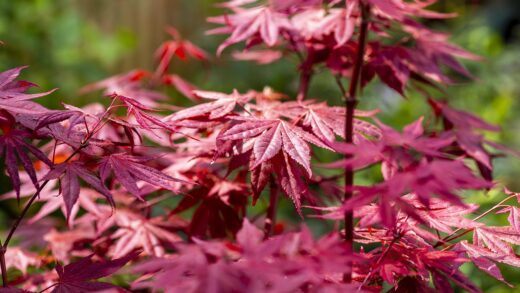The successful wintering of the Golden Rain Tree is a testament to its inherent hardiness and adaptability, but it also relies on a foundational understanding of its needs, especially during its vulnerable early years. While mature specimens are remarkably tough and capable of withstanding significant cold, young trees require more thoughtful preparation to navigate their first few winters successfully. The process of wintering is not just about survival; it is about ensuring the tree emerges from dormancy in the spring healthy, undamaged, and ready for a new season of vigorous growth. Proper winter care involves protecting the tree from the most common cold-weather threats, such as bark splitting, root damage from frozen soil, and dieback of tender new growth. By taking a few preventative steps in the autumn, gardeners can provide the necessary protection to safeguard their investment and ensure the long-term health and structural integrity of this beautiful ornamental tree.
The primary concern during the winter months is protecting the tree from temperatures that fall below its natural hardiness limit. The Golden Rain Tree is generally considered hardy to USDA Zone 5, which means it can tolerate minimum winter temperatures as low as -29°C. However, this rating applies to a healthy, well-established tree. A young, recently planted tree, or a tree that is stressed due to poor conditions, will be more susceptible to cold injury at warmer temperatures. Factors such as a sudden, early cold snap before the tree has fully hardened off, or an exposed, windy location can also increase the risk of damage.
One of the most common forms of winter injury is frost cracking or sunscald, which affects the trunk of young, thin-barked trees. This occurs on cold, sunny winter days when the sun warms the south or southwest side of the trunk, causing the cells to become active. When the sun sets or is blocked by clouds, the bark temperature plummets rapidly, killing the active cells and causing the bark to split vertically. These cracks can create entry points for diseases and insects. This is a significant threat that can be easily mitigated with simple protective measures.
Another winter threat is the desiccation or drying out of plant tissues. This can happen to the branches and buds when the ground is frozen solid, preventing the roots from absorbing any water, while dry winter winds continue to strip moisture from the parts of the tree above the snow line. This is a particular concern for evergreen trees, but it can also cause dieback on the tips of deciduous tree branches. Ensuring the tree is well-hydrated going into the winter and providing some form of windbreak for very young trees can help reduce this type of damage.
Understanding the tree’s cold hardiness
The cold hardiness of a Golden Rain Tree is a complex physiological trait that allows it to survive freezing temperatures. This process, known as acclimation or “hardening off,” begins in the late summer and autumn as the days get shorter and temperatures cool. The tree responds to these environmental cues by slowing its growth, moving sugars from the leaves down into the stems and roots to act as a natural antifreeze, and gradually reducing the amount of water within its cells. This preparation is crucial; a tree that is still in an active state of growth when the first hard freeze arrives is at a very high risk of severe damage.
More articles on this topic
The USDA Plant Hardiness Zone Map is the standard by which gardeners can gauge whether a particular plant is likely to survive the winter in their location. The Golden Rain Tree’s rating of Zone 5 to 9 indicates a broad range of adaptability. A gardener in Zone 7, for example, can be very confident in the tree’s ability to overwinter without any special protection once it is established. However, a gardener in Zone 5 is at the very edge of the tree’s tolerance. In this colder zone, careful site selection—such as planting on the sheltered side of a building—and consistent winter protection for the first few years become absolutely critical for survival.
It is also important to understand the concept of microclimates within your own property. A location at the bottom of a slope can become a “frost pocket,” where cold, dense air settles, making it several degrees colder than a spot at the top of the slope. Conversely, a location near a south-facing brick wall will be significantly warmer and more protected. Assessing these small-scale variations can make a big difference in the tree’s winter survival, especially in borderline hardiness zones. Choosing the warmest and most sheltered microclimate available can effectively push your garden into a slightly higher hardiness zone.
The genetic provenance of the tree can also play a role in its cold hardiness. A Golden Rain Tree grown from seeds collected from a population in a colder, more northern part of its native range may possess slightly better cold tolerance than one grown from seeds from a more southerly population. While this level of detail is not always available from nurseries, it highlights the natural variation that exists within a species. The key takeaway is to provide the best possible care to allow any individual tree to reach its full genetic potential for cold hardiness.
Preparing young trees for their first winters
Young, newly planted Golden Rain Trees are significantly more vulnerable to winter damage than their mature counterparts. Their root systems are not yet extensive enough to anchor them securely or draw moisture effectively from a large volume of soil, and their thin bark offers little insulation against temperature fluctuations. Therefore, taking extra precautions for the first two to three winters is a wise investment in the tree’s long-term health. The goal of these preparations is to insulate the roots, protect the trunk, and reduce moisture loss.
More articles on this topic
One of the most important steps is to apply a thick layer of organic mulch around the base of the tree in the late autumn, after the first light frost but before the ground freezes solid. A 10- to 15-centimeter layer of shredded bark, wood chips, or straw spread over the root zone acts like a blanket, insulating the soil. This helps to prevent deep freezing of the soil, protects the roots from extreme cold, and reduces the heaving of the soil that can occur during freeze-thaw cycles, which can damage shallow roots. Be sure to keep the mulch pulled back a few centimeters from the trunk itself to prevent moisture buildup against the bark.
Protecting the trunk of a young Golden Rain Tree from sunscald and frost cracking is also essential. This is easily accomplished by using commercial tree wraps, which are typically made of paper or burlap, or by using plastic tree guards. Starting from the base of the tree, wrap the trunk upwards to the first set of branches, overlapping the layers by about one-third. The wrap should be snug but not tight enough to constrict the trunk. This protective layer should be put on in late autumn and removed promptly in the spring to prevent it from harboring insects or trapping moisture against the bark during the growing season.
Ensuring the tree is properly hydrated before the ground freezes is another critical step. If autumn has been dry, provide the young tree with a deep, slow watering a few weeks before the first hard freeze is expected. This allows the roots and the surrounding soil to become fully hydrated, which helps the tree withstand the drying effects of winter winds. A well-hydrated tree is a more cold-tolerant tree. This final deep watering is one of the most effective and simplest forms of winter preparation.
Winter care for mature, established trees
For a mature and well-established Golden Rain Tree growing within its recommended hardiness zones, winter care is typically minimal to nonexistent. Once the tree has developed a thick, insulating layer of bark and an extensive, deep root system, it is fully capable of handling normal winter conditions without any human intervention. Its natural dormancy cycle is well-regulated, and it has stored enough energy in its roots to survive the winter and fuel the initial burst of growth in the spring. At this stage, the gardener’s role shifts from active protection to passive observation.
The main task during the winter for a mature tree is simply to monitor it for any damage that may occur from severe weather events. Heavy snow or ice storms can put a significant load on the branches, potentially leading to breakage. While the Golden Rain Tree’s wood is somewhat brittle and can be prone to this type of damage, a tree that has been properly pruned to have a strong structure with well-spaced branches is much less likely to suffer significant harm. After a heavy storm, it is a good idea to inspect the tree from a safe distance for any broken or hanging limbs.
It is also important to be mindful of the use of de-icing salts on nearby sidewalks, driveways, or roads. Salt spray from passing vehicles or runoff from salted surfaces can be absorbed by the tree’s roots and can be toxic, leading to leaf scorch, branch dieback, and overall decline in the tree’s health over time. If the tree is planted in a location where it is exposed to de-icing salts, flushing the soil with a deep watering in the early spring can help to leach some of the accumulated salts out of the root zone. When possible, using alternative de-icing products like sand or calcium magnesium acetate is a better choice for plant health.
During the winter, avoid any major pruning unless it is absolutely necessary to remove a broken or hazardous branch. The dormant season is the correct time for structural pruning, but it is best done in the late winter or very early spring, just before the new growth begins. Pruning in the middle of winter during very cold periods can cause the wood around the cut to dry out excessively, leading to dieback around the wound. Waiting until the coldest part of winter has passed allows the tree to begin the healing process more quickly as spring approaches.
Managing winter-related damage
Despite the best preparations, severe winter weather can sometimes cause damage to a Golden Rain Tree. The most common issues are broken branches from the weight of ice or snow and the appearance of frost cracks on the trunk. When you discover winter damage, it is important to address it properly to help the tree recover and to prevent further problems, such as the entry of disease or pests into the wounds. A timely and correct response can make a significant difference in the tree’s long-term health.
If you find broken branches, they should be pruned off as soon as it is safe to do so. A branch that is partially broken but still attached can be a hazard. The proper way to remove a damaged limb is to use a clean, sharp pruning saw. For larger branches, use the three-cut method to prevent the weight of the branch from tearing the bark down the trunk. Make the first cut on the underside of the branch, about 30 cm from the trunk. Make the second cut from the top, slightly further out than the first cut, to remove the bulk of the branch. The final cut should be made just outside the branch collar to remove the remaining stub.
Frost cracks, the vertical splits in the bark of the trunk, may look alarming, but in many cases, the tree is capable of healing them on its own. The tree’s natural defense is to form callus tissue, or “wound wood,” along the edges of the split, gradually closing it over a period of several years. It is generally not recommended to apply wound paint or tar to these cracks, as research has shown that these materials can trap moisture and inhibit the tree’s natural healing process. The best course of action is to simply keep an eye on the crack and focus on maintaining the overall health of the tree to support its recovery.
In the spring, after the last frost has passed, conduct a thorough assessment of the entire tree. Look for any branch tips that have died back due to cold or desiccation. These can be pruned back to a point where you see healthy, green wood. You may also notice that the tree is slow to leaf out after a particularly harsh winter. It is important to be patient. Sometimes, the primary buds are killed by the cold, and the tree will need to rely on secondary, latent buds to produce new leaves, which can cause a delay of several weeks. Providing good care in the spring will help the tree recover its vigor.
📷 Flickr / Szerző: Plant Image Library / Licence: CC BY-SA 2.0

















